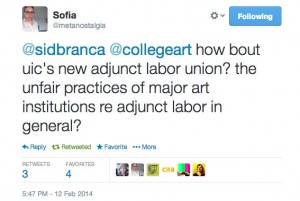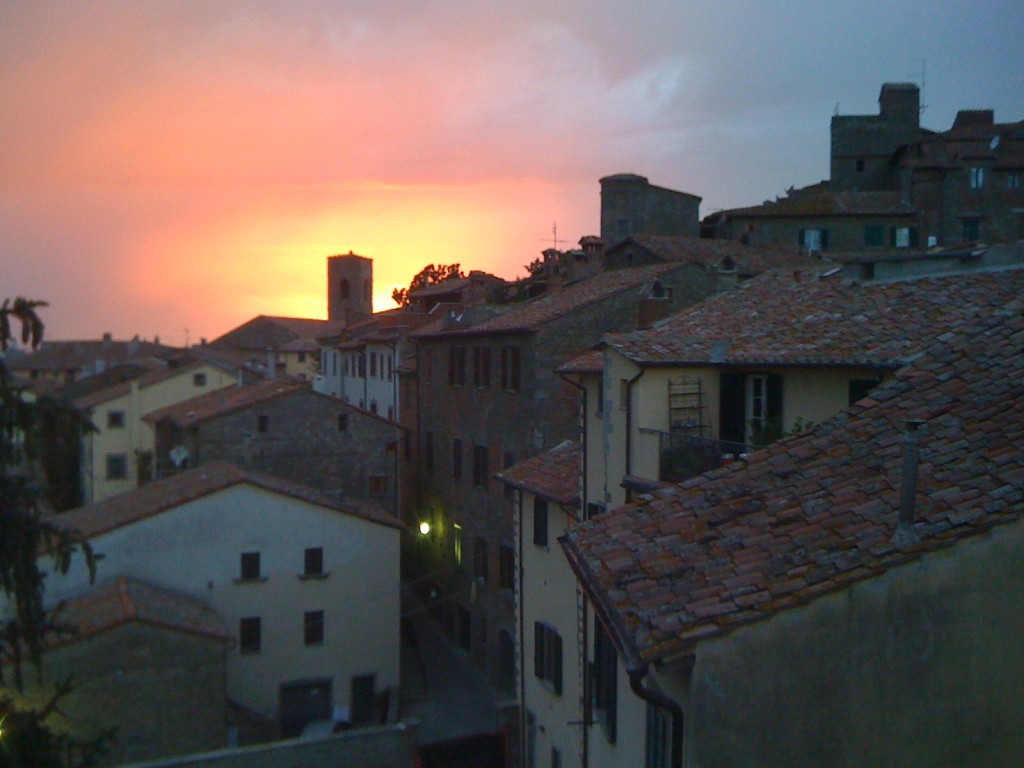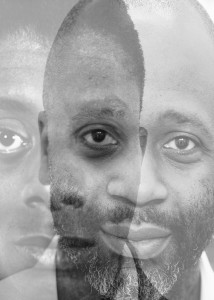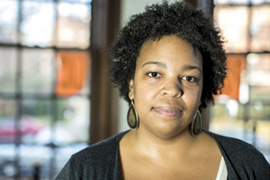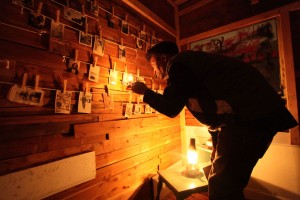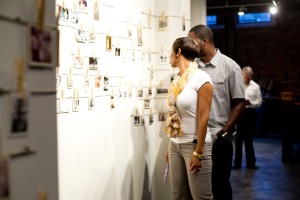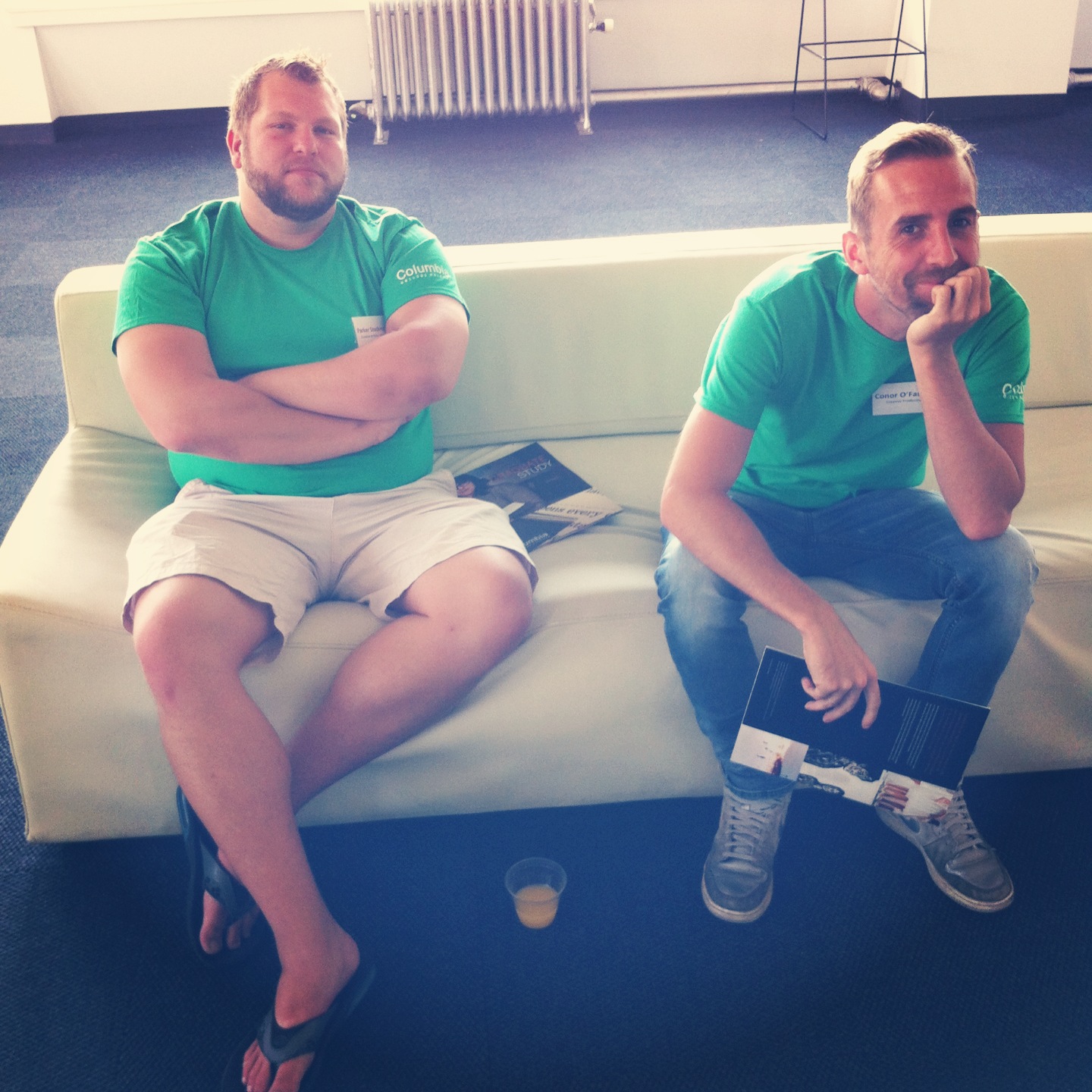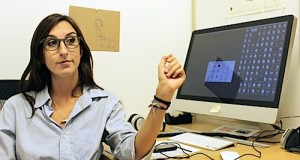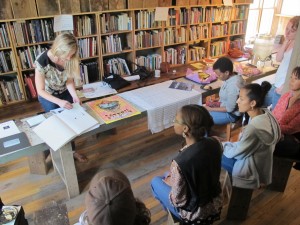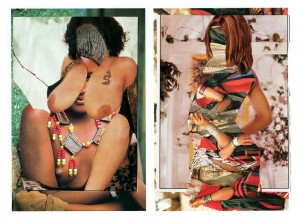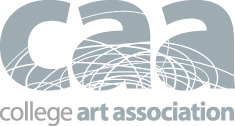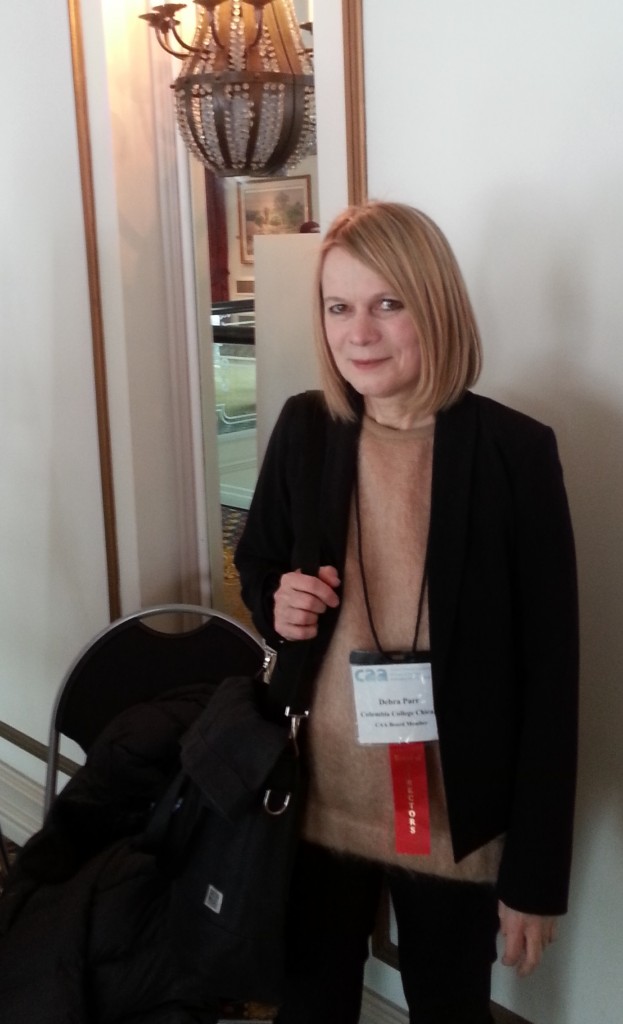
Debra Riley Parr, post-presentation.
Debra Riley Parr is Chair of Fashion Studies and Associate Professor of Art and Design History at Columbia College Chicago. She serves as board member for the College Art Association and has published extensively in books and journals such as Fiberarts, Merge: Sound, Thought, Image, Ten by Ten: Space for Visual Culture, Art and Auction, New Art Examiner, and Artnews.
Debra served up a fantastic paper at the session À La Mode: The Contemporary Art And Fashion System. Titled Glitter and Rubble: Chaos to Couture (and Back Again) in the Late Capitalist Fashion and Art Industries her paper addresses the intersection of Fashion and Art in a globalized economy. Fast-fashion is central to the industry. Designs are copied from the runway and outsourced to production sites in other countries, where they are produced as quickly and cheaply as possible. Alternately, haute couture floods the red carpet and remains the exclusive domain of the hyper-rich.
Debra’s paper compares two events of Spring 2013: the Costume Institute gala celebrating the Metropolitan Museum of Art’s exhibition Punk: Chaos to Couture and the horrific collapse of the Rana Plaza factory in Bangladesh (a major manufacturing site for Fashion wholesalers) that killed thousands of Bangladeshi garment workers. The paper’s dialectical image – the glittery excess of the gala poised against the disastrous rubble of the factory collapse – is given further nuance when considering the Met Gala’s choice of theme: PUNK.
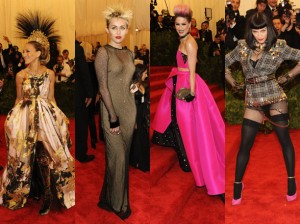
Celebs “Performing Punk” at Met Gala 2013
I’ve been fortunate to work with Debra for the last few months as her research assistant, and her work has shaped much of my thinking regarding Fashion as a site for critical inquiry. I caught up with Debra over coffee to discuss it all for the blog…
MS: To begin, where and how do you see Fashion intersecting with contemporary art and design practices?
DP: The connection has been there for a long time, but the way we are articulating it is changing. The other Fashion panel at the conference [Re-Examining Fashion in Western Art 1775-1975] is a more traditional investigation of the intersection. One paper discusses a specific dress in a specific painting, and historically, as Gilles Lipovetsky articulates, Fashion really taught people how to see detail. From [Lipovetsky’s] deeply historical perspective, Fashion defined social positions through tiny differentiations in styles of dress. For art historians this is really how we define the close read.
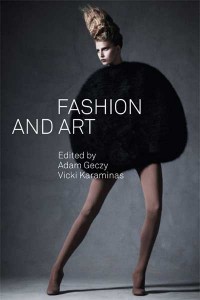
“Fashion And Art” edited by Adam Geczy and Vicki Karaminas (IMG: Sydney.edu)
MS: Does Fashion respond to contemporary art or does Fashion shape contemporary art?
DP: SooJin [fellow panelist SooJin Lee] did a fantastic job of looking at that. And Theodor Adorno, if we are to believe him (and I’m not totally sure that I do), declares that Fashion, in his estimation, has the power to shape all cultural arenas because it is concerned with with the new, with innovation, or what is “A La Mode.”
MS: Or, as you describe in your paper, following the modernist logic of speed and replacement.
DP: Yes. Art has a job – to critique culture. And central to my argument is that Fashion has a hard time being “Art” because it is unaware or unconscious of Art’s project as critique.
MS: I’m thinking now, because one of the panelists discussed it, of the Jay-Z and Marina Ambramovic performance; or the so-called “day performance art died.” Thinking of it in the context of Fashion as a performance…
DP: …there is definitely a borrowing from performance art. Like Alexander McQueen. And at the panel, Maud [panel discussant Maud Lavin] was trying to encourage us to think of the everyday, Fashion as an everyday performance. McQueen borrows from performance art.
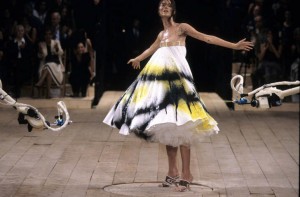
Dress #13 Spring/Summer 1999, Steve McQueen (IMG: Met Museum)
MS: And McQueen was a student of art history, or, at least aware of Art’s project, right? He was exposed to it as a student? What about other designers who maybe aren’t taught Fashion-as-Art or Fashion-as-critique?
DP: The education of Fashion designers has not been theoretically or historically grounded enough. But there are other designers too…Viktor & Rolf, Rick Owens…
MS: And it is New York Fashion Week right now…anything that has struck you?
DP: I’m following on instagram mostly, and the Central Saint Martin’s graduate showcase was incredible.
MS: Moving into punk–We first met when I took your class titled Object & Image: Post-Punk Studies and your paper addresses the ironic choice of punk as a theme for the Met Gala. In our class, we read Dick Hebdige’s Subculture: The Meaning of Style, and examined punk Fashion as a semiotic practice. What draws you to punk as a field of study?
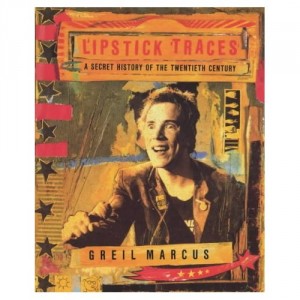
Greil Marcus’s “Lipstick Traces: A Secret History of the 20th Century” (IMG: Harvard Univ Press)
DP: Well I really, really, really love Greil Marcus’s Lipstick Traces: A Secret History of the Twentieth Century because it combines my interests in the historical avant-garde and punk. He sees punk as furthering the social disruptions of Dada. I also personally love the graphic design – Jamie Reed, Malcolm Garrett, Barney Bubbles, 4AD. When I interviewed for my job at Columbia they asked me to give an example of how I would teach something in the classroom, so I played the Buzzcocks’ Autonomy.
MS: Is anyone today continuing the project that Hebdige started, or doing a semiotic reading of fashion?
DP: In cultural studies certainly, and Hebdige is ubiquitous in the academy.
MS: What about Fashion under late-capital – What are the current problems related to the Fashion industry in this economic model?
DP: Certainly the problem of hidden subcontracting processes [in manufacturing]. Capital will flow to unregulated sites. It begs the question – Who is in charge? The state? The labels? Who bears responsibility?

Mohammed Sohel Rana (IMG: BBC)
MS: Which is why I love the moment in your paper when you address the scape-goating of Mohammed Sohel Rana, the owner of the Rana factories, as if his arrest resolved the problem. It is similar to punk really, the Met Gala appears to “cleanse punk.”
DP: And there is a rich history of trying to make punk safe for consumption. The Met is the ultimate situation of that. And don’t get me wrong, I loved the exhibit.
MS: Why? What did you love about it?
DP: I often really love the things that need the most critique. Like fast-fashion, TopShop, it’s fun to shop there. And at the exhibit I loved seeing these garments up close, all in one place. And I really love the idea of punk having this energizing effect. Imagine yourself as a designer, fashion demands something new, something exciting.
MS: So what is selling-out?
DP: Just because some one adopts you doesn’t mean that you’ve sold out. Should I be critiqued for using or adapting punk in my classroom? Is it a sell-out for the lead singer of Sonic Youth to be at the Met Gala, or for Vivienne Westwood to become a dame?
MS: Why do you think people have such a problem with that?
DP: It seems disconcerting – it’s like how I love looking at the Karl Lagerfeld “punk” suit he designed for Chanel. Chanel is luxe, elegance. For me that suit is the object that speaks to all of this. It is exciting, it is a tour de force, it’s wonderful- and it is just all wrong.

Coco Chanel in the “Chanel Suit” (IMG: Wonderland Magazine)
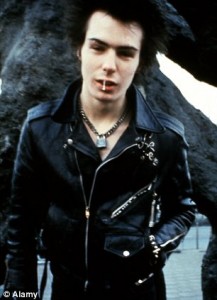
Sid Vicious of The Sex Pistols (IMG: The Daily Mail)
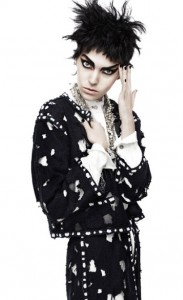
Model wearing Karl Lagerfeld’s Punk Suit, designed for fashion label Chanel (IMG: David Sims/Vogue)
Interview: Debra Parr on Fashion-As-Art
Debra Riley Parr is Chair of Fashion Studies and Associate Professor of Art and Design History at Columbia College Chicago. She serves as board member for the College Art Association and has published …
600 S. Michigan Ave.
Chicago,
IL
60605

